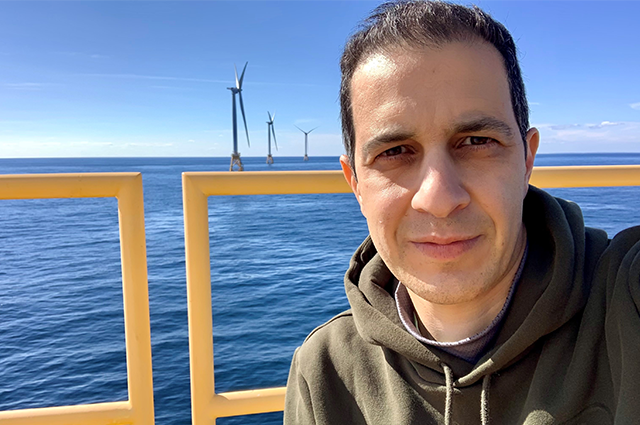Moaveni named Structural Health Monitoring Person of the Year

Professor Babak Moaveni of the Tufts Department of Civil and Environmental Engineering was named the 2023 Structural Health Monitoring (SHM) Person of the Year by Structural Health Monitoring: An International Journal. Moaveni was nominated by Professor Masoud Sanayei, also of the Department of Civil and Environmental Engineering, and was selected as the winner by the editors and associate editors of the journal. The award was presented at the 14th International Workshop on Structural Health Monitoring (IWSHM) in recognition of Moaveni’s outstanding contributions to the field over the last few years.
Moaveni is the first winner of this award from Tufts University. He obtained his PhD in structural engineering at University of California-San Diego and has been teaching and conducting research at Tufts since 2008. In addition to structural health monitoring, Moaveni’s main research interests include Bayesian inference and inverse problems, system and damage identification of civil structures, structural dynamics, earthquake engineering, uncertainty quantification, and verification and validation of computational models.
This year’s IWSHM was held at Stanford University and included a look back at how SHM has grown in recent decades as well as conversations about the future of the field. The theme of the gathering was designing SHM for sustainability, maintainability, and reliability. Structural health monitoring involves regular analysis of an engineering structure such as a building or bridge for safety and maintenance purposes. While these practices have always been essential, their importance continues to mount as engineers look to reduce their carbon footprint and develop safe infrastructure that can be maintained for a long time. Researchers like Moaveni work at a pivotal point as the field faces new possibilities with the growth of automated monitoring methods and developments in materials and fabrication techniques.
“Babak’s research in structural health monitoring has been innovative in terms of theoretical formulation and at the same time practical with real-world applications,” says Professor Laurie Baise, Chair of the Department of Civil and Environmental Engineering. “We congratulate him on this well-deserved recognition, and I look forward to seeing where his work takes him next.”
Department:
Civil and Environmental Engineering